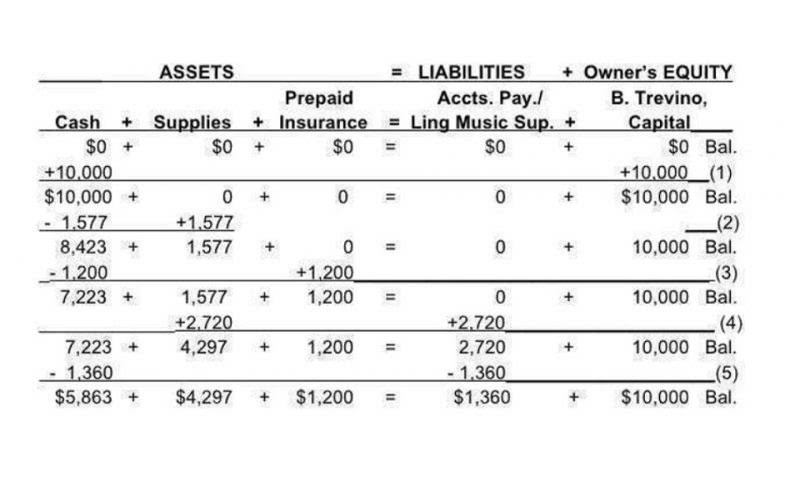
Entering this data successfully will allow you to figure out the FIFO and LIFO values. This LIFO calculator will help you calculate the remaining value of your inventory as well as cost of goods sold using the last-in-first-out method. In summary, it is important to understand the differences between the Last-In, First-Out, and First-In, First-Out methods.
FIFO accounting results
Then, since inflation increases price over time, the ending inventory value will have the bulk of the economic value. As the FIFO method assumes we sell first the items acquired first, the ending inventory value will be higher than in other inventory valuation methods. The only reason for this is that we are keeping the most expensive items in the inventory account, while the cheapest ones are sold first. The LIFO FIFO Calculator is a specialized tool designed to assist accountants and business owners in determining the COGS under different inventory management methods. By inputting the cost and the quantity of inventory purchases and sales, the calculator simplifies the computation of COGS, allowing for more straightforward financial analysis and reporting. Then, since deflation decreases price over time, the ending inventory value will have less economic value.
- Based on the LIFO method, the last inventory in is the first inventory sold.
- FIFO assumes that cheaper items are sold first, generating a higher profit than LIFO.
- FIFO assumes a regular inventory turnover, and the remaining inventory has a higher value compared to other inventory valuation methods.
- Get ShipBob WMS to reduce mis-picks, save time, and improve productivity.
- FIFO works best when COGS increases slightly and gradually over time.
How do I calculate ending inventory using LIFO?

There is more to inventory valuation than simply entering the amount you pay for your inventory into your accounting or inventory management software. There are a number of ways you can value your inventory, and choosing the best inventory valuation method for your business depends on a variety of factors. Businesses would lifo and fifo calculator use the weighted average cost method because it is the simplest of the three accounting methods. The FIFO and LIFO methods impact your inventory costs, profit, and your tax liability. Keep your accounting simple by using the FIFO method of accounting, and discuss your company’s regulatory and tax issues with a CPA.

What Is Inventory?
Use advanced inventory tools to gain precise, real-time valuation insights tailored to your business. Optimize your inventory strategy and boost your profitability today. Weighted Average Cost is ideal for businesses dealing with homogeneous products. FIFO method works well for businesses with stable prices and those selling perishable goods.
- Since the economy has some level of inflation in most years, prices increase from one year to the next.
- Because the brand is using the COGS of $5, rather than $8, they are able to represent higher profits on their balance sheet.
- For instance, say a candle company buys a batch of 1,000 candles from their supplier at $2 apiece.
- But even where it is not mandated, FIFO is a popular standard due to its ease and transparency.
- Therefore, inflation rates may impact a business’s choice to use either FIFO or LIFO.
- It’s important to check industry standards in your jurisdiction to ensure your valuation method meets regulatory compliance.
- As a result, LIFO doesn’t provide an accurate or up-to-date value of inventory because the valuation is much lower than inventory items at today’s prices.
The cost of goods sold is found on the balance sheet, and the ending inventory is found on the income statement. The company made inventory purchases each month for Q1 for a total of 3,000 units. However, the company already had 1,000 units of older inventory that was purchased at $8 each for an $8,000 valuation. In other words, the beginning inventory was 4,000 units for the period. The valuation method that a company uses can vary across different industries. Below are some of the differences between LIFO and FIFO when considering the valuation of inventory and its impact on COGS and profits.
Average Cost

The cost of goods sold for 40 of the items is $10, and the entire first order of 100 units has been fully sold. The other 10 units that are sold have a cost of $15 each, and the remaining 90 units in inventory are valued at $15 each, or the most recent price paid. The FIFO method avoids obsolescence by selling the oldest inventory items first and maintaining the newest items in inventory. The actual inventory valuation method used does not need to follow the actual flow of inventory through a company, but an entity must be able to support why it selected the inventory valuation method.
LIFO Calculator
- Exchange rate charges may adversely affect the value of shares in sterling terms, and you could lose money in sterling even if the stock price rises in the currency of origin.
- In that case, the best method is the analytical one – to deduce the ending inventory from your beginning inventory, the cost of goods sold, and net monthly purchases.
- This will provide the final result and if you want to calculate it within a single click, use the ending inventory calculator.
- So, if the bakery sold 400 loaves on Wednesday, the cost of goods sold is $1 per loaf because that was the price of the first loaves in the inventory.
- In this case, the remaining inventory (ending inventory) value will include only the products that the company produced later.
- Likewise, you want to start the day with the freshest inventory, so the first ones in will cause the oldest ones to go out.